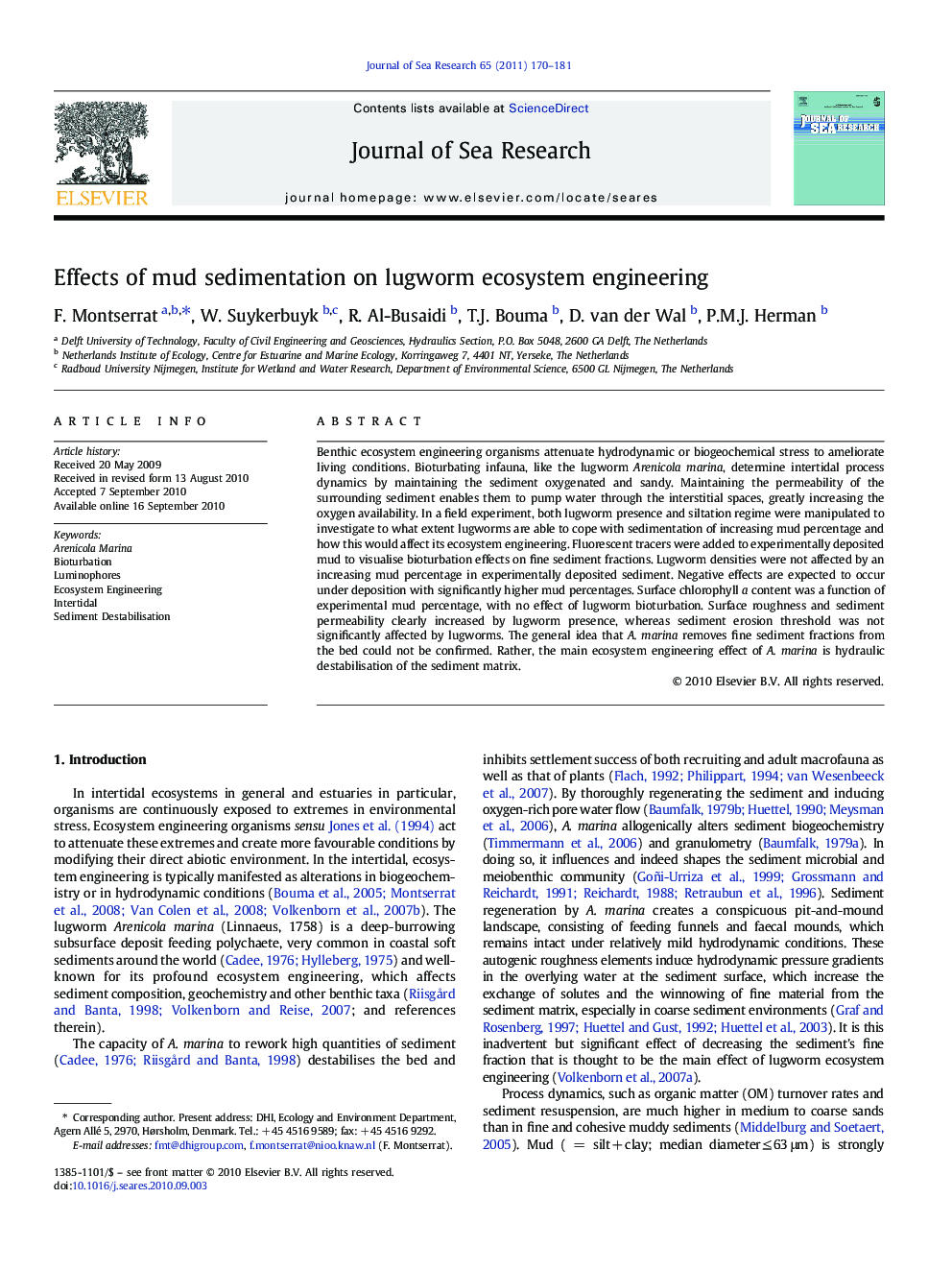| Article ID | Journal | Published Year | Pages | File Type |
|---|---|---|---|---|
| 4550060 | Journal of Sea Research | 2011 | 12 Pages |
Benthic ecosystem engineering organisms attenuate hydrodynamic or biogeochemical stress to ameliorate living conditions. Bioturbating infauna, like the lugworm Arenicola marina, determine intertidal process dynamics by maintaining the sediment oxygenated and sandy. Maintaining the permeability of the surrounding sediment enables them to pump water through the interstitial spaces, greatly increasing the oxygen availability. In a field experiment, both lugworm presence and siltation regime were manipulated to investigate to what extent lugworms are able to cope with sedimentation of increasing mud percentage and how this would affect its ecosystem engineering. Fluorescent tracers were added to experimentally deposited mud to visualise bioturbation effects on fine sediment fractions. Lugworm densities were not affected by an increasing mud percentage in experimentally deposited sediment. Negative effects are expected to occur under deposition with significantly higher mud percentages. Surface chlorophyll a content was a function of experimental mud percentage, with no effect of lugworm bioturbation. Surface roughness and sediment permeability clearly increased by lugworm presence, whereas sediment erosion threshold was not significantly affected by lugworms. The general idea that A. marina removes fine sediment fractions from the bed could not be confirmed. Rather, the main ecosystem engineering effect of A. marina is hydraulic destabilisation of the sediment matrix.
